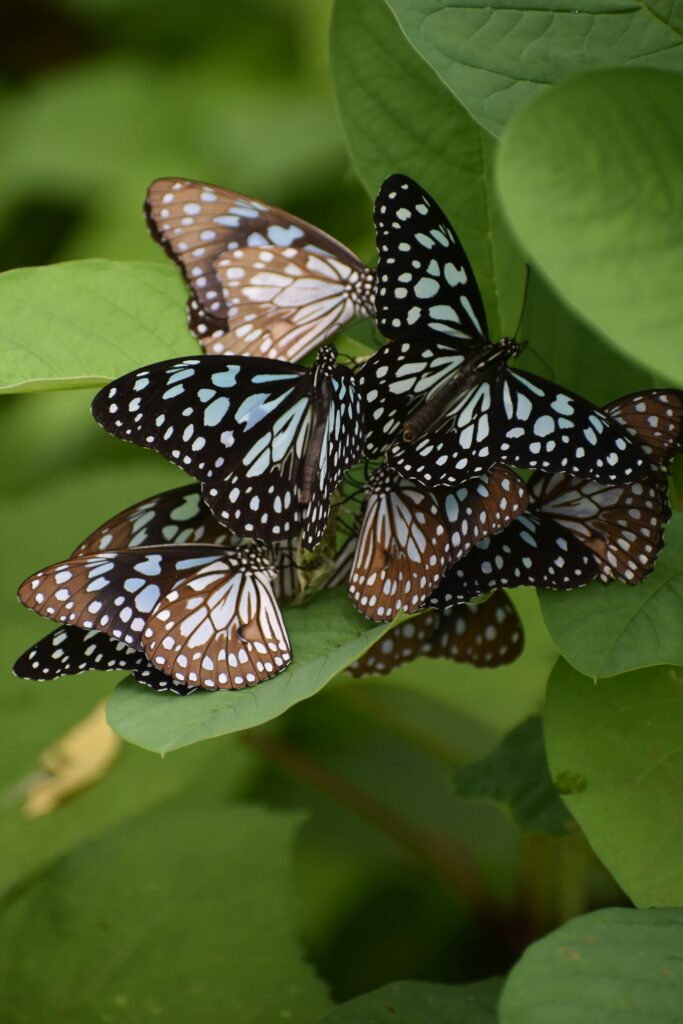Author: Abby Marsden
Date: August 19, 2024

Article Title:
Butterfly Species Richness Patterns in Canada: Energy, Heterogeneity, and the Potential Consequences of Climate Change
Article Affiliation:
University of Oxford
Article Citation:
Kerr, J. T. (2001). Butterfly species richness patterns in Canada: energy, heterogeneity, and the potential consequences of climate change. Conservation Ecology, 5(1).
INTRODUCTION
Pollinators like butterflies are essential for the reproduction of many plants and the overall health of ecosystems throughout Canada, but their distributions are not well documented. These species face many threats, with anthropogenic climate change being one of the most significant risks. “Butterfly species richness patterns in Canada: energy, heterogeneity, and the potential consequences of climate change” focuses on how climate change and habitat heterogeneity impact butterfly species prosperity in Canada.
This study focuses on the spatial patterns of butterfly species across Canada and identifies the key factors influencing these patterns. The central question of the study was whether contemporary climate – specifically the presence of higher amounts of water in the atmosphere – or habitat heterogeneity – measured by the variety of land cover types – better predicts butterfly diversity in the region. This research is crucial as it addresses the gap in understanding how climate and landscape structure together influence species distribution, an area where previous studies have often focused on energy availability alone.
RESULTS AND DISCUSSION
The research shows that butterfly species richness in Canada follows patterns similar to those observed in many other species such as beetles, mammals, and birds. Butterfly diversity generally decreases looking northward and eastward, with the highest diversity found in southern Ontario and the south central Great Plains. Diversity is lowest in the eastern Arctic but higher in the more heterogeneous western Arctic. These patterns suggest that similar environmental factors, such as climate and habitat heterogeneity, influence species richness across different taxa.
Both high regional habitat heterogeneity (land cover variation) and climatic energy (potential evapotranspiration) are the main drivers of butterfly diversity, which explains 50 to 80% of the observed variation in species richness. But the predictability of these factors declines at finer spatial scales, possibly due to variations in data sampling intensity and ecological factors that become more pronounced in smaller areas.
Overall, the study’s findings strongly suggest that climate change does have a significant capacity to impact regional butterfly diversity, particularly in areas vulnerable to increased temperatures. The research also supports earlier models predicting that habitat diversity may decline in a rapidly warming climate, potentially leading to shifts in species richness patterns and even local extinctions.
Some of the study’s strengths include its detailed analysis of butterfly data and the application of advanced GIS methods. However, a significant limitation is the unequal sampling across different regions, which may affect the accuracy of the results for some areas.

The research presented in this study sheds light on the factors that shape butterfly diversity in Canada, which is important for understanding how these species might be affected by climate change. Butterflies are key pollinators, and changes in their populations can impact plant life and broader ecosystems, as well as the agricultural sector. By showing that both climate and habitat diversity play significant roles in butterfly species richness, the study provides valuable information for conservation efforts, helping to protect these species as the environment changes.
CONCLUSION
Overall, “Butterfly species richness patterns in Canada: energy, heterogeneity, and the potential consequences of climate change” demonstrates that butterfly diversity in Canada is influenced by both climate and the variety of habitats. The findings suggest that regions with more diverse habitats and higher climatic energy have more butterfly species. This is important because it shows that climate change could significantly impact butterfly populations by altering these key factors. For the general public, the study emphasizes the need to focus on preserving diverse habitats to help protect butterfly species and, by extension, the ecosystems they support.
